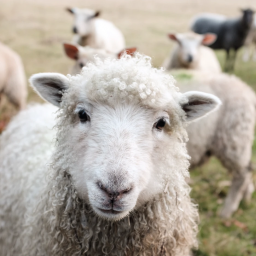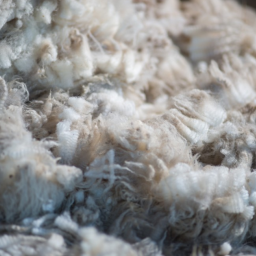Why Wool is Cool
• The fleece of sheep has been used to make human clothing since the Stone Age.
• Wool flourishes where there is rain and sunshine. These two elements sustain the grassy fields that sheep graze on. Shearers shave off the wool every year before the weather gets too hot. Wool is the ultimate renewable fibre.
• Wool from about 61 sheep extend all the way from the earth to the moon.
• Wool may be made from mixtures of hair from sheep, alpaca, llama, camel, cashmere, mohair, angora, vicuna, yak, guanaco, beaver or otter. No animals are harmed in the harvesting of wool.
• Wool is flame-resistant. It will not melt and stick to your skin like synthetic fibres. Instead, wool will usually smoulder and extinguish itself when the source of the flame has been removed. The fibre of choice for casinos and airlines.
• The fastest recorded time to shear a sheep is 39.31 seconds by Hilton Barrett of Australia.
• Wool is composed of same protein that makes up the outer protective layer of your skin.
• Have you ever wondered why your wool socks withstand foot stench longer than cotton or synthetic socks? Wool is naturally mildew and mould resistant because it is a natural moisture repellent, MEANING LESS STINK. Wool also reduces dust mite activity (they do not like wool!).
• Over its lifetime, a sheep’s fleece will absorb approximately 30Kg of carbon dioxide.
• Renewable, recyclable, and naturally biodegradable; choosing wool minimizes the amount of waste that sits in landfills. Wool biodegrades in weeks to less than 1 year depending on environmental conditions. This is due to its high nitrogen content.
• Wool products can last for 15 to 20 years (or more)
• Wool can absorb indoor contaminants, including formaldehyde, sulphur dioxide and nitrogen dioxide and locks them away in the fibre core. It is naturally soil and stain resistant, attracts less dirt and dust due to anti-static properties and requires less cleaning than synthetic fabrics.
• Wool fibres have a crimped texture so when it’s packed more tightly together lots of tiny pockets of air form. This structure means that it can absorb and release wick away moisture, allowing your skin to breathe so you feel fresh as a daisy.
• Due to its crimped structure, wool is naturally elastic, and so wool garments have the ability to stretch to your shape but can then return to their original state. It is also resistant to tearing and requires less processing to make it useable.
• Wool’s high nitrogen and water content makes it naturally flame resistant. Wool does not ignite easily and will self-extinguish. Should wool burn it does not melt while burning. Wool produces less smoke and toxic fumes during combustion than synthetic fibres, making it a far safer choice.
Poll: Does the building consent process need to change?
We definitely need homes that are fit to live in but there are often frustrations when it comes to getting consent to modify your own home.
Do you think changes need made to the current process for building consent? Share your thoughts below.
Type 'Not For Print' if you wish your comments to be excluded from the Conversations column of your local paper.

-
91.5% Yes
-
8.2% No
-
0.3% Other - I'll share below!
Food and product recalls
These items have been recalled during the last month. If you have any of these items at home, click on the title to see the details:
Product recalls
Avanti, Malvern Star & Raleigh bicycles
Yoto Kids Speaker
Anko Kids Pyjamas
Battery drill chainsaw attachment
Industrial pedestal misting fan
Yamaha adaptor
Zero Tower safety harness
Naturacoco moisturising cream
Thule child bike seat
Food recalls:
Maketū pies mussel pie
The Catering Studio cottage pie
Matakana Smokehouse gravlax/salmon
Our Fruit Box fruit juices
ProLife Foods value packs - nuts, raisins.
YY Dumplings & Fu Yuan ready-to-eat meat products
Waiheke Herbs italian herb spread
We hope this message was helpful in keeping your household safe.

Say goodbye to tyre waste
About 40% of the 6.5 million tyres Kiwis use every year are recycled, repurposed, or used as tyre-derived fuel. But the rest end up in landfills, stockpiled or dumped.
The good news is now there’s an easy solution to all that tyre waste. It’s called Tyrewise and is New Zealand’s first national tyre recycling scheme.
Tyrewise ensures that tyres in Aotearoa New Zealand are recycled or repurposed properly, saving millions from going to the landfill.
Find out more about the scheme online.












 Loading…
Loading…























